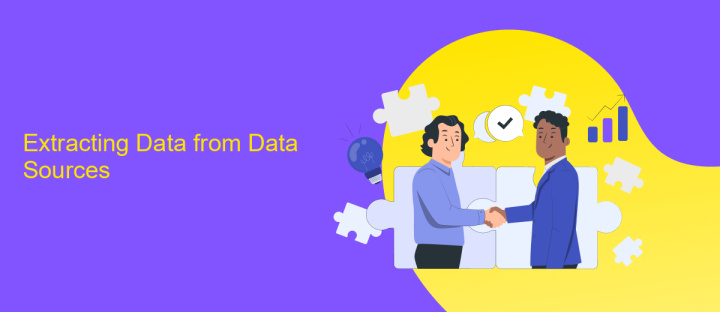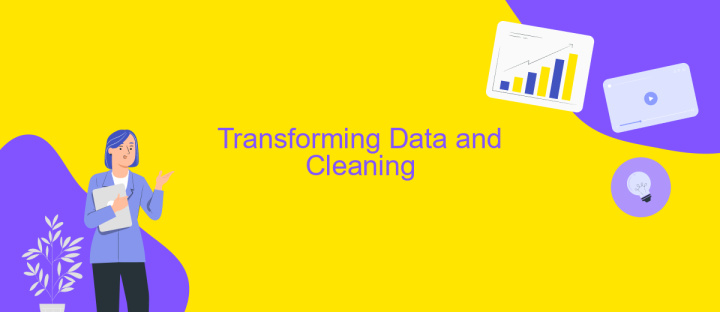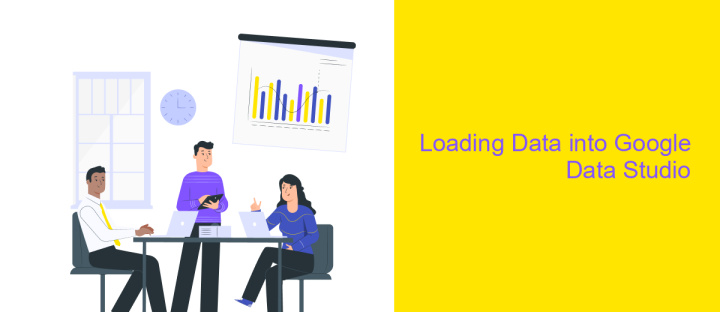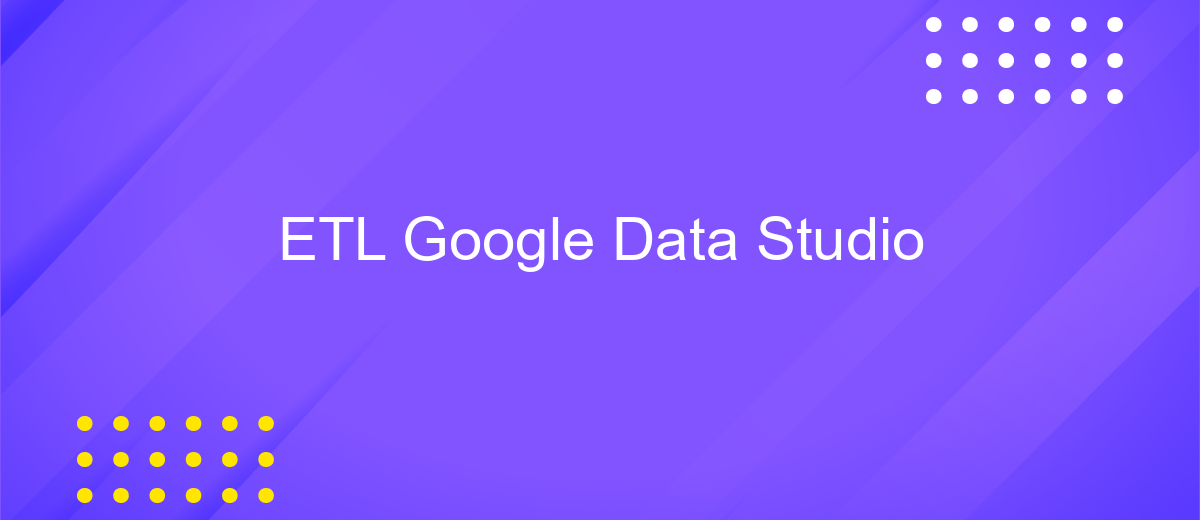ETL Google Data Studio
In today's data-driven world, transforming raw data into actionable insights is crucial for businesses. ETL (Extract, Transform, Load) processes play a vital role in this transformation. Google Data Studio, a powerful data visualization tool, simplifies this process by seamlessly connecting to various data sources, enabling users to create interactive and insightful reports. This article explores the essentials of ETL in Google Data Studio.
Introduction
ETL (Extract, Transform, Load) processes are essential for businesses looking to make data-driven decisions. Google Data Studio is a powerful tool that helps visualize data, but before you can leverage its full potential, you need to ensure that your data is properly extracted, transformed, and loaded.
- Extract: Gathering data from various sources.
- Transform: Cleaning and structuring the data.
- Load: Importing the data into Google Data Studio.
One of the tools that can simplify the ETL process is ApiX-Drive. It allows seamless integration between different data sources and Google Data Studio, ensuring that your data is always up-to-date and ready for analysis. By automating the ETL process, ApiX-Drive saves time and reduces the risk of errors, making it easier for businesses to focus on generating insights rather than managing data.
Extracting Data from Data Sources

Extracting data from various data sources is a crucial first step in the ETL process within Google Data Studio. This involves connecting to multiple data sources, such as databases, cloud storage, and third-party applications, to gather the necessary information. Google Data Studio supports a wide range of connectors, including Google Analytics, Google Sheets, BigQuery, and more, making it easier to pull in data from diverse platforms. The platform provides a user-friendly interface to set up these connections, ensuring that data extraction is seamless and efficient.
For more advanced integration needs, services like ApiX-Drive can be highly beneficial. ApiX-Drive allows users to automate data extraction from various sources without the need for complex coding or manual intervention. By leveraging ApiX-Drive, businesses can streamline their data integration processes, ensuring that all relevant data is accurately and timely imported into Google Data Studio. This not only saves time but also enhances the reliability of the data being analyzed, enabling more informed decision-making.
Transforming Data and Cleaning

Transforming and cleaning data is a crucial step in the ETL process to ensure accuracy and usability. During this phase, raw data is converted into a structured format suitable for analysis in Google Data Studio. This involves several key steps to refine and enhance the dataset.
- Data Standardization: Ensure consistency in data formats, such as date, time, and numerical values.
- Data Cleansing: Identify and correct errors, remove duplicates, and handle missing values.
- Data Enrichment: Integrate additional data sources to provide more context and insights.
- Data Transformation: Apply calculations, aggregations, and other operations to convert data into a more useful form.
Utilizing tools like ApiX-Drive can streamline the integration and transformation process by automating data workflows and ensuring seamless data transfer between various platforms. This not only saves time but also reduces the risk of manual errors, resulting in cleaner and more reliable data for your Google Data Studio reports.
Loading Data into Google Data Studio

Loading data into Google Data Studio is a crucial step in creating insightful reports and dashboards. This process allows you to visualize and analyze your data efficiently. First, ensure that your data is clean and well-structured to avoid any issues during the import process.
Google Data Studio supports multiple data sources, including Google Sheets, BigQuery, and MySQL databases. To load data, you need to connect to your desired data source and authorize Data Studio to access it. This can be done through the Data Studio interface, which provides a user-friendly experience.
- Open Google Data Studio and create a new report.
- Click on "Add Data" and choose your data source.
- Authorize Google Data Studio to access your data.
- Configure the data fields and dimensions as required.
For more complex integrations, consider using services like ApiX-Drive. ApiX-Drive simplifies the process of connecting various applications and automating data transfers, ensuring that your data is always up-to-date and ready for analysis in Google Data Studio.
- Automate the work of an online store or landing
- Empower through integration
- Don't spend money on programmers and integrators
- Save time by automating routine tasks
Monitoring and Troubleshooting
Effective monitoring of your ETL processes in Google Data Studio is crucial for ensuring data accuracy and performance. Regularly check the data sources for any discrepancies and verify that the scheduled data refreshes are occurring as expected. Utilize Google Data Studio's built-in alerts to notify you of any anomalies or failures in data updates. Additionally, leveraging third-party tools like ApiX-Drive can streamline the integration of various data sources and automate monitoring tasks, providing a more robust and reliable ETL workflow.
Troubleshooting ETL issues often involves identifying the root cause of data discrepancies or failures in data refreshes. Start by reviewing the data source connections and ensure that all credentials and permissions are correctly configured. Examine the transformation logic to detect any errors or inconsistencies. If problems persist, consult the Google Data Studio support documentation or community forums for guidance. For more complex integrations, ApiX-Drive offers detailed logs and error reporting features that can significantly aid in diagnosing and resolving issues, ensuring smooth and continuous data operations.
FAQ
What is ETL in the context of Google Data Studio?
How can I automate data integration for Google Data Studio?
Can I connect Google Data Studio to multiple data sources?
What are the benefits of using ETL tools with Google Data Studio?
Is it possible to schedule data refreshes in Google Data Studio?
Apix-Drive will help optimize business processes, save you from a lot of routine tasks and unnecessary costs for automation, attracting additional specialists. Try setting up a free test connection with ApiX-Drive and see for yourself. Now you have to think about where to invest the freed time and money!


